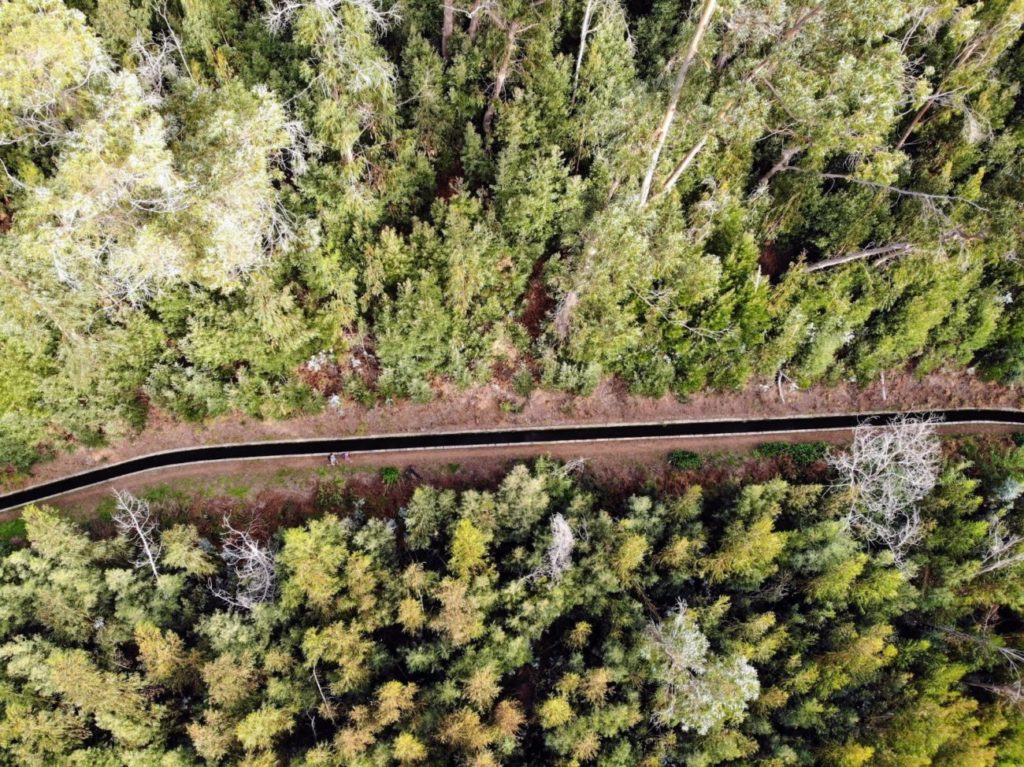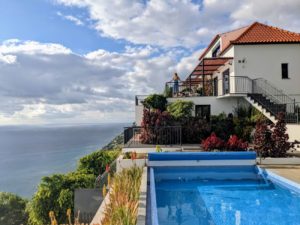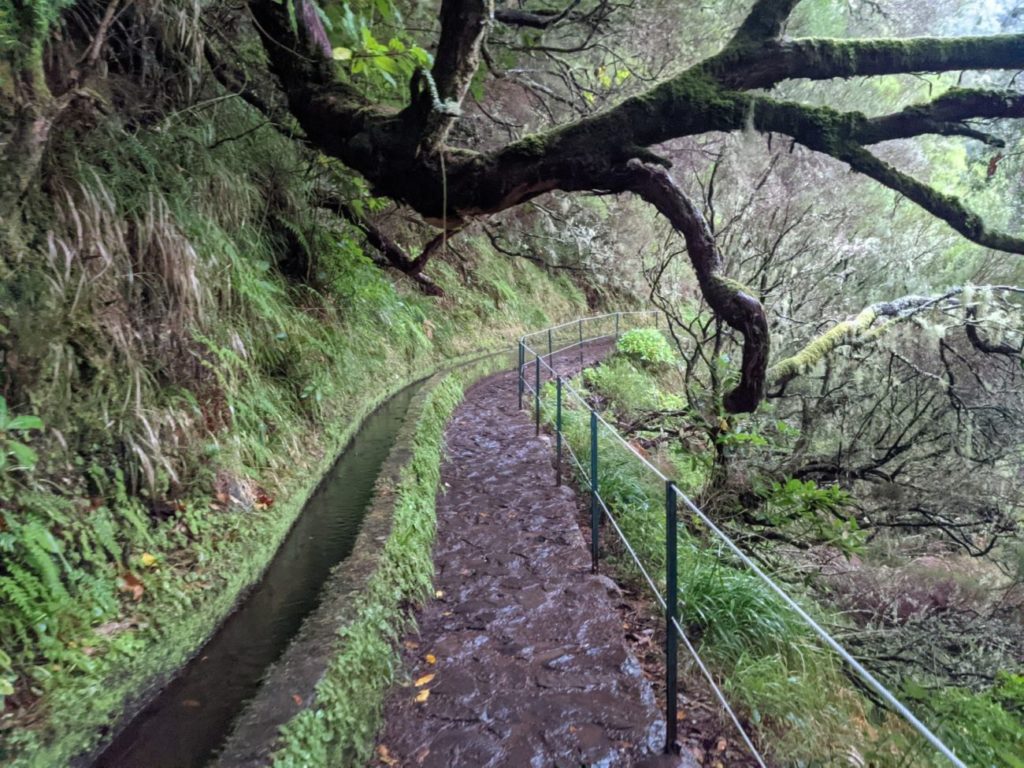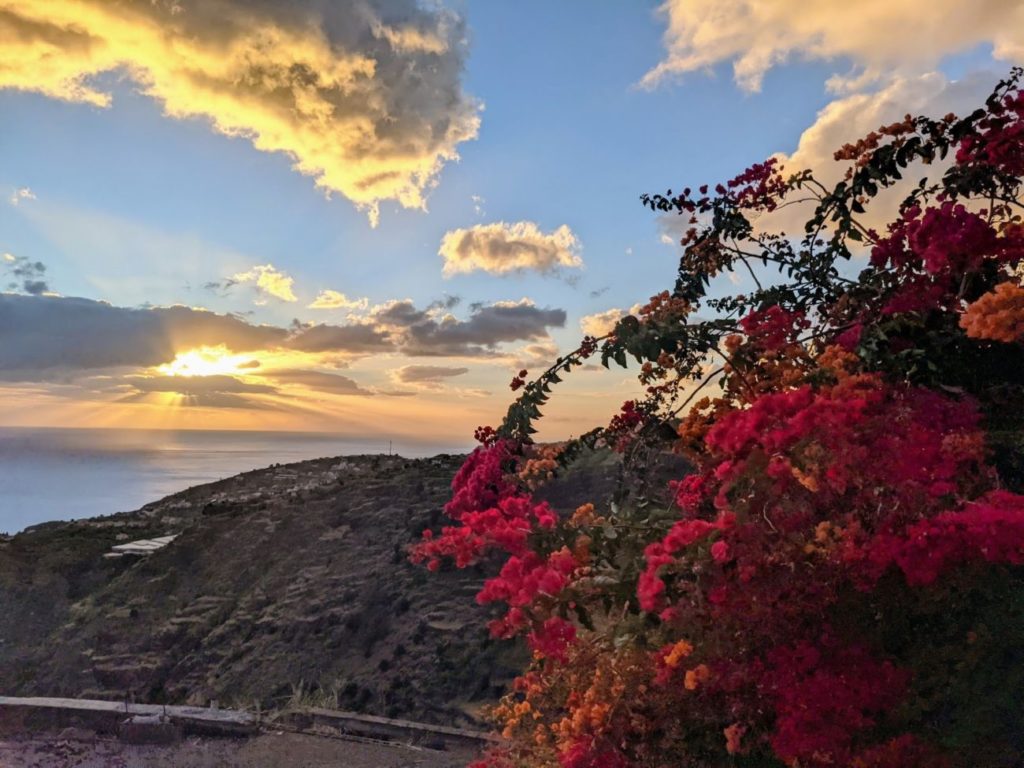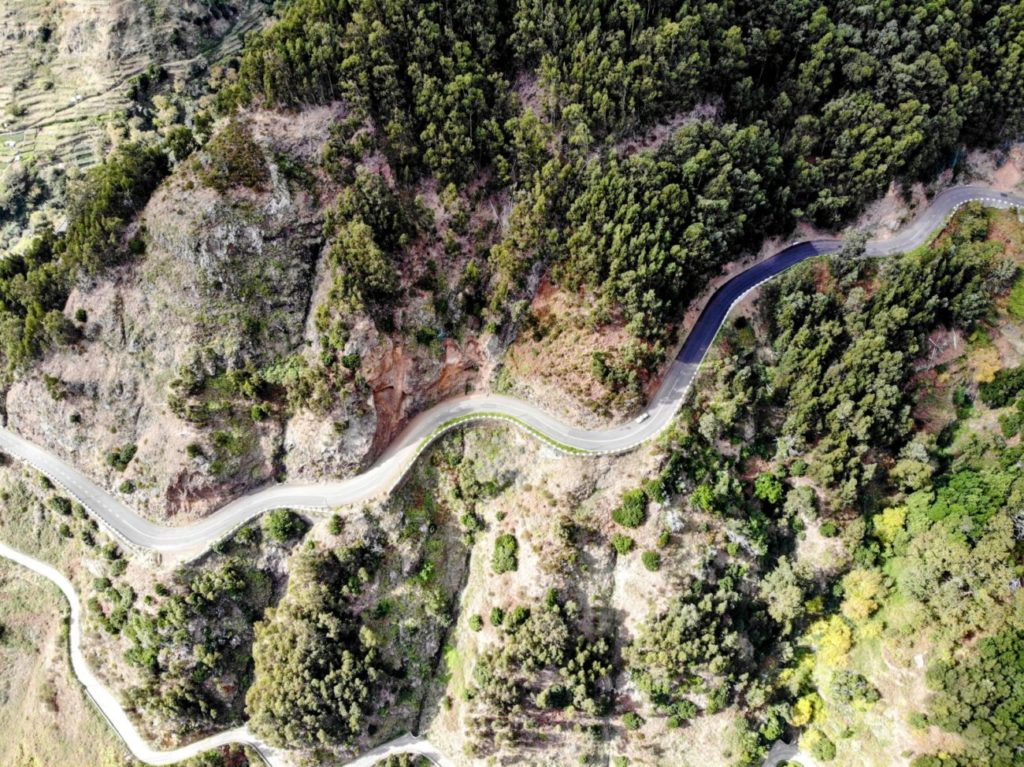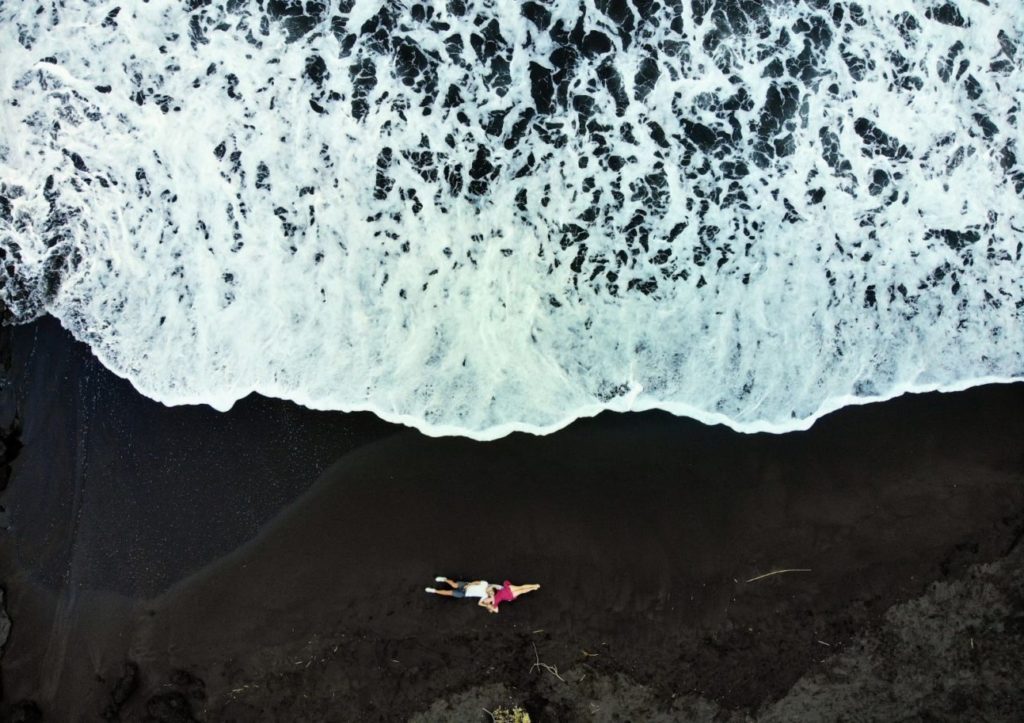Looking for the best tips for your first time at Madeira? Then you are at the right place. We spent almost 2 weeks on this versatile island in the Atlantic Ocean. Madeira offers wonderful spring-like weather all year round, great beaches, varied hiking trails and nature that you won’t find in continental Europe. There are thousands of kilometers of levadas that you can hike along. You can climb the highest mountains on the island and swim in the Atlantic Ocean.
On the well-maintained roads you can drive through the subtropical forests in the center of the island and experience several climatic zones in a short time. In short, Madeira is a true dream island that is worth visiting at any time of the year. What you should pay attention to when planning your trip, how it looks like with hotels, rental cars and the lovely weather in Madeira we want to tell you in our travel tips for Madeira.
Exploring Madeira by Car
Driving a car on Madeira is a thing of its own. Many roads – especially the side roads – are so steep, curvy and narrow that you have to be an experienced driver to get around. Especially the starting on the mountain should be mastered here. If you have been on the road in Madeira for a few days, you will get used to it. But the first few days definitely take some time to get used to it.
So while the side roads are almost always very curvy and very steep, the main roads are mostly dead straight. This is because most main roads (or expressways) go through the mountains in tunnels that are often miles long. These are then briefly interrupted by a traffic circle in the fresh air before entering the next tunnel. Especially in the south of the island, driving is like this when using the expressways (recognizable by the abbreviation VE).
Difference between ER and VE Roads
If you look at the roads on Madeira on Google Maps, you will immediately notice the differences between the often dead straight VE roads and the mostly very curvy ER roads. VE are the expressways (or highways) on Madeira. They often run through endless tunnels and bring you as fast as possible to your destination.
The roads with the abbreviation ER are more like country roads and wind without tunnels partly over narrow serpentines over mountain and valley. So, in summary, if you want to get somewhere quickly, take the fast VE roads. If you want to experience Madeira and also have fun driving over winding roads, then rather take the ER roads. It will take you much longer, but you will see and experience much more along the way.
Are there Speed Cameras in Madeira?
There are a few speed cameras on Madeira, but they are announced beforehand. We saw speed cameras – and the corresponding signs – but only near the capital Funchal and the airport. On the rest of the island, we have discovered neither fixed nor mobile speed cameras. Of course, you should always adhere to the speed limit displayed.
How fast can I drive in Madeira?
The maximum speed on the highways (VE) is usually 90km/h. In the city you are usually only allowed to drive 50km/h. Out of town, depending on the road conditions, you can dive faster. Just pay attention to the signs. Sometimes there are signs out of town that allow a 10 km/h higher speed when the sun is shining. In case of rain, the speed limit must be adhered to. A very fair regulation as we find.
Parking in Madeira
As in Germany, there are parking bays on Madeira and mostly parking is allowed at the roadside. Here you have to pay attention to the color of the lines at the roadside. With blue lines you have to buy a parking ticket. With white lines parking costs nothing. 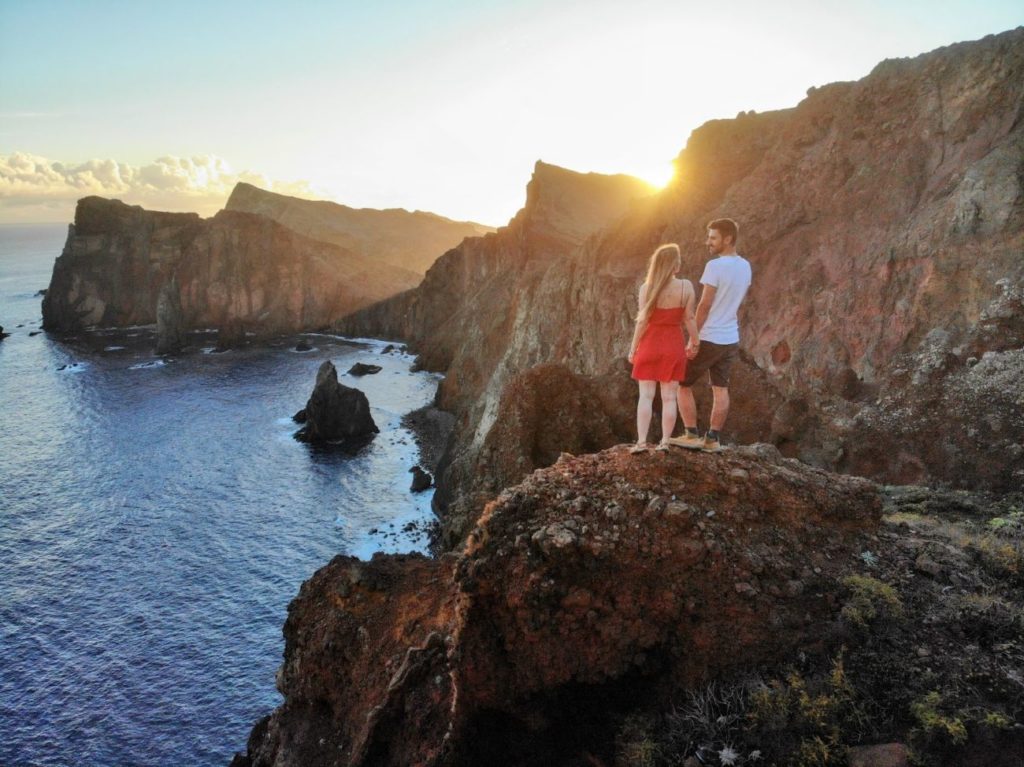
Rental Car or Bus in Madeira?
There are many who fly to Madeira and travel without a rental car on the island. This is also possible without any problems, because there is a well-developed bus network on Madeira. In total, there are five bus lines on Madeira, some of which only operate in Funchal (Horários do Funchal. Bus map as PDF) or each of which serves a different part of the island. Intercity connections are offered by the following companies: Rodoeste Bus, SAM Bus and Canico Bus.
Then there is the Aerobus, which connects the airport with Funchal. For each bus ride you need a new ticket, which costs about 1.50 Euro. Unfortunately, there is no transport association in Madeira, so you need a new ticket for each bus. We would recommend you to rent a car. This way you are much more flexible and can get to more remote areas of the island very quickly.
Where to stay in Madeira?
Even if you spend 2 weeks on Madeira you don’t need to look for several hotels on the island. Since Madeira is not very big – from west to east you need only a little more than an hour – it is enough to look for a place to stay on the Atlantic island and start your excursions there every day. In our opinion, the much sunnier south is the best place for this.
If you don’t want to stay near the capital Funchal, because it is too busy there (which we can understand), the south or southwest of Madeira is a good starting point. We stayed for example in Calheta in the southwest of Madeira and that was the perfect place for us to enjoy the nature and silence and still be quickly in all possible corners of the island.
If you want to reduce the travel time even more, you could choose one accommodation in the west of Madeira and one in the east near the capital Funchal. Then you can divide your road trip through Madeira into an eastern and a western part and still only have to change hotels once during your vacation. Of course, you can also look for accommodation on the north side of Madeira, but keep in mind that statistically it rains more often and is cloudier in the north.
Our Hotel Recommendation on Madeira
- large apartments up to 1-2 floors
- private bathroom
- fully equipped kitchen
- amazing view of the sea
- pool and private terrace
- private parking place
The apartment complex Seasky Arco* is located above the town of Calhete in the southwest of Madeira on a steep slope.
Thanks to the very steep access road, getting there is anything but easy, but you won't be bothered by any traffic and you'll have a direct view of the sunset on the Atlantic.
There are floor-to-ceiling windows, a private pool, a huge terrace and a huge bed from which you can watch the sun go down. Simply a wonderful place to come to rest and relax from the strenuous hikes. We felt mega comfortable here!
Seasky Arco | Check Availability*Levadas in Madeira
Madeira is famous for its levadas. But what is that anyway? A levada in Madeira is actually a small water channel that brings water from the rainy north to the south of the island to agricultural land. Since it rains more in the north of Madeira than in the south, it is a great idea to supply the fields of the sunnier south with water.
The levadas lead along valleys, through mountains and dense forests and always have a slight gradient, so that the water also flows. Some of the levadas on Madeira were built as early as the 15th century – before there were the first roads on the island – and are still in use today. In total, there are said to be over 2,500 kilometers of levadas on Madeira, and you can still hike on most of them today.
How does that work? Well, to maintain the levadas, there had to be paths next to the levadas. On these paths, the levadas can be inspected and, if necessary, repaired. And these paths can be used as hiking trails today! The trails next to the levadas are sometimes only half a meter and sometimes 1-2 meters wide.
Mostly well secured with a railing, but occasionally there is no boundary between you and the abyss. So you should hike carefully! Either way, you will have a wonderful view, because the levadas cross completely Madeira and offer you views that are unparalleled.
We have summarized the most beautiful levada hiking trails on Madeira for you here: The 5 most beautiful levada walks in Madeira
Weather in Madeira | Best time to visit Madeira
Madeira is known as a spring island and has a mild and subtropical climate. Here it is nice, warm and sunny almost all year round, in summer of course a bit more than in the European winter. But Madeira is always suitable for a trip. In the European summer, however, it is still almost 5 degrees warmer on the island than in autumn or winter.
Therefore, it is more likely to sit in a bikini on the beach or at one of the natural pools in summer than in winter. On good days, however, it is still warm enough to sweat in the sun even in winter. On average it is up to 26 degrees in the summer months with up to 10 hours of sunshine a day. In winter it can get as warm as 20 degrees with an average of 6 hours of sunshine a day. The water temperature always oscillates between 17 and 23 degrees.
There are almost no rainy days in summer and up to 8 in winter, so as you can see, summer is the more ideal time to visit Madeira, but it can also be very hot and crowded. In winter, on the other hand, the weather is more pleasant (because less hot) and there are fewer tourists in the country.
We ourselves were on the road in Madeira in November. On almost all days we had good weather in the south with just over 20 degrees and a mix of sun and clouds. It was also still warm enough to hop in the pool or even go swimming in the sea.
Difference between North and South
The weather is often better on the southern side of Madeira than in the north. In the north it rains more and the clouds are statistically more likely to be stuck in the north and not make it to the south over the high mountains in the center of the island. Therefore, many of the levadas, which are used for agricultural irrigation, also lead from the rainy north to the south.
Difference between the Coast and the Center of the Island
When we talk about the maximum temperatures in Madeira, we mean the temperature on the coast, for example in the capital Funchal. Due to the special topology of the island, the temperatures and the weather on the coast are often completely different from those in the mountainous center of the island.
On the coast you are almost at sea level and in the center of the island (e.g. in the popular hiking area at Levada dos 25 Fontes) at well over 1000 meters. So while you can (no matter if in summer or winter) lie on the beach at the coast in a bikini at 25 degrees, it can have only 10 degrees in the center of the island with storm and rain. The rain clouds are also held up by the high mountains in the center of Madeira (e.g. the Pico Ruivo) and therefore often do not reach the sunny south.
This should be taken into account if you are still sitting at the hotel pool in the morning and then set off for a hike in the center of the island. Better pack long pants and your outdoor jacket and gladly also a fleece sweater. Because the weather can be unpredictable here.
How much is a vacation in Madeira?
Madeira is averagely expensive by European standards and comparable to other vacation regions in the Mediterranean. Hotels and restaurants are similar to those in Mallorca or Sardinia. If you are self-catering on Madeira, then the food prices are also interesting for you. The prices in the supermarket are for many standard products such as eggs, flour, bread similar to those in Europe. Some products that have to be brought to the country by ship or plane (e.g. cheese, sweets) are much more expensive. You can expect a surcharge of 20-75%.
The Beaches on Madeira
There are hardly any real sandy beaches on Madeira, and if there are, they are artificially filled up with sand from the Sahara (e.g. the sandy beach in Calheta). The few natural sand beaches on Madeira are mostly black, because they consist of eroded volcanic rock.
You can marvel at this, for example, at the, admittedly very small, sandy beach in Seixal in the north of the island. Most beaches on Madeira are pebble beaches, whereby pebbles here can range from small stones to almost small rocks. However, this does not detract from the desire to swim here. The pebble beaches can also be used for sunbathing and swimming.
More Travel Tips for Madeira
EU Roaming
Since Madeira officially belongs to Portugal, although it is located off the African Atlantic coast, it also belongs to the EU. So you benefit from the free EU roaming option of your cell phone contract. You can surf the internet and make phone calls as if you were in Germany or Holland. In addition, this also means that you only need to carry an identity card when entering the country and do not need a passport as a european.
Power Sockets on Madeira
Also the sockets on Madeira correspond to the European standard and therefore you do not need an adapter or similar to charge your electronic devices (such as your cell phone or camera).
Currency on Madeira
Due to the fact that we are part of the EU, we pay with the Euro. So you don’t have to change money on the spot. But you don’t really need cash, because you can pay with a card almost everywhere in Madeira.







